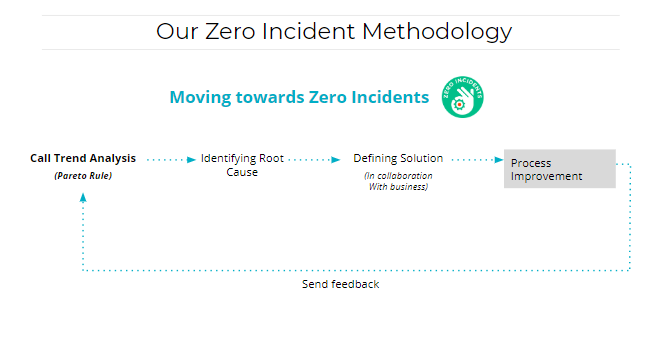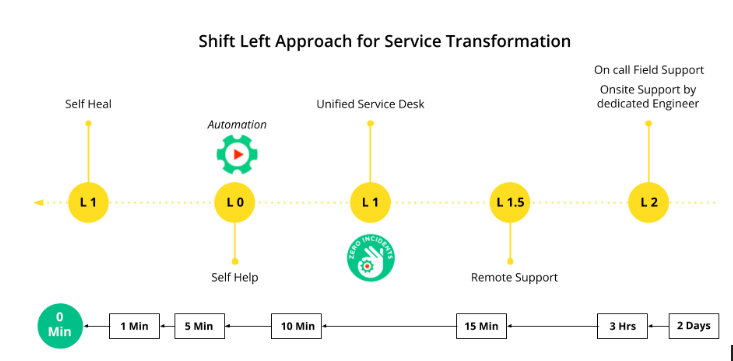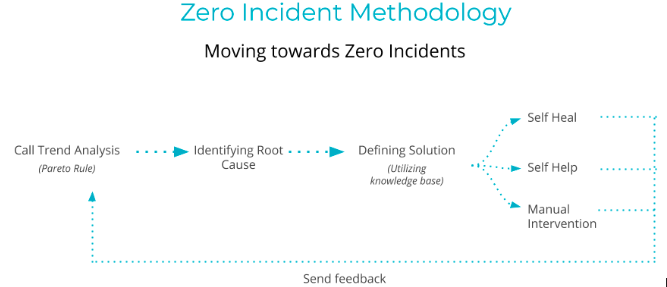There is perhaps no area in an organization that does not encounter problems or incidents. But the good part about such encounters is that they are not one of a kind. After a period of time, every organization starts to face a set of complications that don’t appear in isolation. The challenges can be easily clubbed to address them as a whole.
Team Computers’ Zero Incident Methodology aims to recognize such recurrences. The methodology is more of a philosophy that considers that incidents should not happen in the first place. Initiating a solution for a recurring problem proves to be inefficient for both the client as well as the service provider. So, the basic principle it operates on is to not handle the same issue multiple times. It looks to develop an effective solution, fit for the recurring problem and adopts means to employ it in all areas. The prime focus of this methodology is to not resolve issues in silos. It aims to put a mechanism in place that can be referred to in varied instances.
Now, how does a centralized IT infrastructure help?

Hence, the presence of a root cause analysis. The zero-incident methodology will involve a continuous review of call data to identify the biggest contributors of calls and would try finding the elimination or reduction methods of such categories. More than identifying the solution, it is imperative to seek the root cause behind its presence. The cause helps to develop a foolproof mechanism against the complication. Not just that, the same solution can be employed at multiple locations of the organization.
For instance, after a stipulated period, all employees of an organization are required to update their mailing passwords. This would require each of them to do so in time otherwise there will be multiple instances of the same problem for the IT department. For a size of over 2000 employees, manual updation of the passwords is a task that is almost impossible. With the help of an automation tool, a procedure is adopted to send automatic reminders and a process to update. This makes incident management nearly 30% easier.
In case such possibilities are not there for some categories, then remote or automation possibility will be the next focus which may also involve Self-help or Self-heal methods.
- For achieving these probable reductions following methods may be used with Zero Incident Approach:
- Process engineering & optimization
- User Awareness & education
- Self -Heal scripts on the automation platform
- Self Help buttons (single click) for the execution of a series of steps
- Robotic guidance on screen for new task management/user education
- Knowledgebase creation & regular updates with awareness guidance/tips.

Through proven methodologies, proactive approach and thrust on continual improvement through analysis, the reactive incident tickets will significantly reduce significantly over a period of time. This Zero Incident approach thereby reduces IT resource utilization.

This approach is carried out by keeping a view on the feedback received for each problem addressed. The way the complication was overcome, through what solution and the method through which it was carried out is deeply analyzed. Thus, the record of all the probable complexities along with their solutions creates a knowledge bank that can be beneficial for future references. A separate user base is simultaneously prepared to equip ourselves with any form of complexity that can arise in that particular sector. Therefore, it becomes comparatively easier for newer clients who choose a service provider who can already define a set solution for their common problems.
Thus, a problem management solution is proactively established to remove the root cause of a problem’s possibility. It aims to clearly wipe out all the reasons that can result in the presence of, and a consecutive solution of a particular problem. Hence, the zero-incident approach works for not just the solution but also the complete analysis of the problem.
